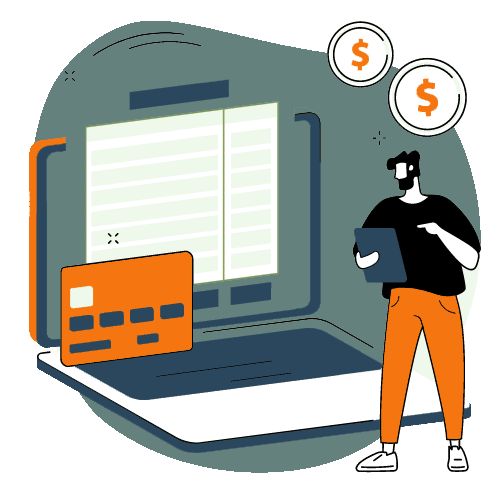It’s important to notice the signs of cocaine addiction. Your life—or a loved one’s life—may depend on it.
Cocaine is a highly-addictive drug that, like opioids, has seen a rise in both its use and its involvement in drug overdose deaths in recent years in the United States. According to the Centers for Disease Control and Prevention (CDC), deaths involving cocaine in the U.S. increased 34.4% from 2016 to 2017, with two out of five involving the addictive opioid, fentanyl. However, even in the absence of an overdose, cocaine is a powerful and deadly drug that can wreak havoc on a person’s body and cause significant changes in behavior and mood.
Loved ones such as family members, spouses, and close friends are often the first people to notice these signs, and can be important in helping their loved one get drug addiction treatment. If you suspect a loved one is addicted to cocaine, knowing common signs and symptoms can be useful to help you determine how to proceed in getting your loved one into an addiction treatment program.
Do you need cocaine addiction treatment? Call us today at 330.919.9228 for more information.
1. Leaving Behind Traces Of Cocaine Or Drug Paraphernalia
One of the most visible signs of cocaine use is left-behind residue of powdered cocaine on objects belonging to the person, or other drug paraphernalia. This refers to tools used to take drugs like cocaine, which can often be left out among a person’s belongings.
Common drug paraphernalia linked to cocaine use include:
- Straws
- Glass pipe
- Tightly-rolled dollar bills
- Burnt spoons
- Pens
- Tubes
- Containers with white powder
- Mirror
- Syringes or needles
Powdered cocaine residue is most likely to be left on flat surfaces, such as tables, desks, magazines, or countertops. However, not everyone who uses cocaine leaves behind evidence of their drug use. Some people may ensure they clean up any trace of their cocaine use, whether to avoid detection or to avoid someone taking their materials.
2. Erratic Behavior And Mood
Cocaine can have dramatic effects on mood and behavior shortly after taking the drug, lasting anywhere between a few minutes to an hour depending on how much of the drug was used, method of use, and other factors. Common short-term effects on behavior and mood include:
- Euphoria
- Excitability
- Anxiety
- Increased energy
- Mental alertness
- Talkativeness
- Restlessness
- Irritability
- Sensitivity to light, sound, or touch
Within a short time, these initial effects will disappear, leaving a person to either come down off the high or take more of the drug. Over time, cocaine use can cause longer-lasting changes in behavior. These changes can make a person unrecognizable to even their closest friends and loved ones. Part of this may be attributed to the crash experienced after the effects of cocaine have worn off, which can make a person increasingly irritable and closed off. They may also show signs of being physically sick and become hostile.
3. Physical Changes in Appearance
People who frequently use cocaine may also begin experiencing symptoms such as nosebleeds, runny nose, and muscle twitches either after taking cocaine or between doses. The more a person uses the drug, the more likely it is that their cocaine use will begin to dominate their everyday life. This can cause a person to be forgetful of other responsibilities and activities, including those related to personal hygiene.
Many people struggling with a serious drug addiction can become disinterested in keeping up appearances. As a result, they begin to appear disheveled or unkempt.
4. Financial Problems
There are several costs to maintaining a cocaine addiction, not the least of which is the financial cost. In 2016, the estimated retail price of cocaine in the U.S. was an average of $93 per gram, according to the United Nations Office on Drug and Crime. The amount of cocaine a person uses per day can vary. However, it’s common for someone who is addicted to use up to multiple grams of cocaine a day.
This can become unaffordable for the average person. For those who are unable to afford the cost, stealing or regularly borrowing money from others can be common to maintain a steady cocaine supply. People who find themselves facing financial trouble as a result of their addiction may also have difficulty paying bills, experience job loss, and lack money for other necessities such as food.
5. Unable To Stop Using Cocaine
People who become addicted to drugs like cocaine may be unable to stop using the drug without experiencing physical or mental side effects known as withdrawal symptoms. This occurs when a person’s body has become dependent on cocaine. At that point, this process may begin with symptoms of the typical crash, such as:
- Severe depression
- Fatigue
- Increased appetite
Cocaine withdrawal, which can include intense cravings for the drug, can become very difficult to manage alone. Without professional support, people who attempt to quit on their own can be more likely to return to their cocaine use, if only to experience relief from symptoms. If your loved one is unable to reduce or stop their cocaine use, addiction treatment may be necessary. It may be the only way to help them stop using the drug and overcome their addiction.
Treatment For Cocaine Addiction In Ohio
The first step for most people struggling with a cocaine addiction is to enter a detox program. Once there, they can be monitored and treated as they undergo the initial process of withdrawal. At The Bluffs rehab facility in Ohio, we offer medically-supervised detox. This is part of our comprehensive cocaine addiction rehab program to help patients first remove all addictive substances from their systems.
To learn more about the signs of cocaine addiction and how to get a loved one into cocaine addiction treatment in Ohio, contact one of our treatment specialists at The Bluffs today at 330.919.9228.








